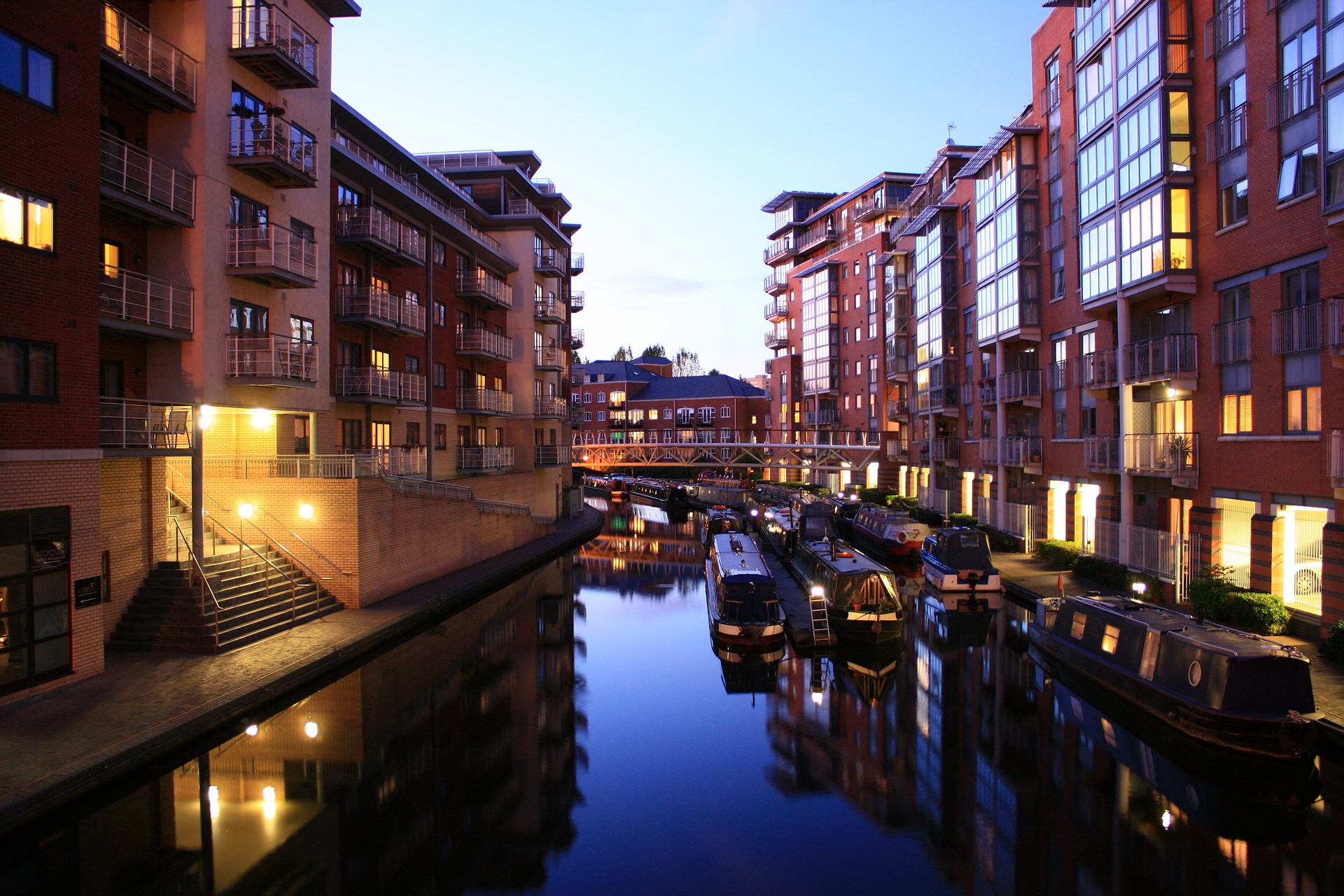
While recent media headlines might be devoted exclusively to Brexit, there are a raft of other major government projects – from Universal Credit to the MoD’s new aircraft carriers – that also attract a lot of column space. One of these is undoubtedly High Speed Two. The government says this is a once-in-a-generation chance to rebalance the British economy. Others criticise the project as a “white elephant” that won’t ever generate the returns promised. What are the facts about HS2? As with so many other areas, this debate could benefit from looking beyond the UK’s borders to learn a few lessons from overseas.
We know that the UK has a significant regional productivity problem, with all regions in the North and Midlands of England between 7 to 15% less productive than the UK average [i]. It can be tempting to look at a country like Germany, with high-speed rail connecting most cities, and assume there is a correlation between the economic success of its regions and the country’s famously well-developed infrastructure network. In fact, the Department for Transport (DfT) does exactly that in its high-speed rail strategy document [ii], where the modern rail infrastructure of Germany is contrasted with Britain’s Victorian network. The DfT goes on to claim that the quality of such transport links is an important factor in firms’ investment decisions.
However, Germany is rather different to the UK in many ways. With a long history of federalism, no dominant political, cultural and economic centre has emerged – there is no city that dominates to the extent that London does the UK. Moreover, it is generally the smaller regional cities of Germany that are more prosperous, productive and dynamic. The country’s two major urban areas – Berlin and the Ruhr agglomeration around Essen and Dortmund – are less economically successful than medium-sized towns, such as Mannheim and Heidelberg in Baden-Württemberg, or Ingolstadt and Regensburg in Bavaria. This opens up interesting questions about the real value of the “agglomeration effect”, which is often cited in literature from the Anglo-Saxon world as a reason why a big city like London is so much more productive than other cities in the UK.
Nevertheless, there does seem to be some evidence that high-speed rail benefits Germany, although not to the extent DfT claims. Research by academics working at LSE looked at two small German towns that were connected to the national high-speed ICE network and found that the link increased local GDP growth by 2.7% when compared with similar towns with no such connection. Investment in rail, in common with other forms of public transport, also relieves congestion on roads and can improve journey times, as well as significantly cutting the air pollution and carbon emissions caused by personal vehicle use. Rail has an important part to play in a low-carbon future.

The outline business case for HS2 prepared by DfT forecasts total benefits for the project to be £71 billion, made up primarily of time savings along with some increased agglomeration effects and other economic impacts [iii]. Based on an estimated net cost of £31.5 billion in 2013, DfT said that a new high-speed rail network connecting London with Birmingham, Manchester and Leeds had a cost to benefit ratio of 2.3:1, indicating a return of £2.30 for every £1 spent.
Subsequently it has turned out that the cost of the scheme is rapidly increasing. One leaked government report suggests that HS2 is likely to go as much as 60% above the initial budget. This means that the cost to benefit ratio released by DfT will almost certainly be incorrect, and the project may even struggle to maintain a positive cost to benefit ratio. One easy way for HS2 to achieve a greater cost to benefit ratio would be integrating cycleways along its length. The government’s business case for a cycleway along the route of HS2 estimated returns of £3 to £8 for every £1 spent – well in excess of even the most optimistic forecasts for HS2, and for a relatively small increase in costs compared with the network as a whole. DfT ultimately decided not to fund a cycling route along the course of the new rail network, but it is still not too late to amend this decision.

Beyond the German case, what can other international experiences of high-speed rail tell us about the likely effects of HS2? Research [iv] has found that Japan’s network has not meaningfully contributed to firms moving jobs and investment into the country’s regions. In fact, it has intensified the centralisation of the country’s service sector into the two major cities of Tokyo (population: 37.8 million) and Osaka (population: 12.1 million), at the expense of relatively smaller cities on the network. In France there has been a similar concentration of the service sector in Paris as a result of the high-speed network, although cities such as Lille and Lyon have admittedly benefited from the opening of regional offices by firms headquartered in the capital.
However, in both cases the high-speed network has also become a symbol of national pride, and the Japanese Shinkansen has become something of an icon of engineering. It also opens up the potential for exporting the technology and know-how that comes with building a high-speed network. Japan sees exports of its bullet trains as a cultural, economic and geopolitical objective, for instance. The UK government is clearly thinking about this, having opened a new National College for High Speed Rail in Birmingham and Doncaster to attract students and develop the skills required to run a new network. This also provides the opportunity for local people to take on apprenticeships and training that can lead to well-paid jobs in the industry.

Spain’s experiences of high-speed rail have also not lived up to the claims made by politicians. The many failings of the Spanish network were examined in a fascinating podcast from the Centre for Cities, in which LSE’s Professor Rodríguez-Pose talked about how it was designed primarily for political reasons that have renedered the high-speed network in Spain economically unviable. The network connects all provincial capitals, no matter how small – and in many cases there was no demand for these services. As a result, it has never returned any of the initially forecasted profits. There is also no evidence of Spanish firms choosing to relocate to regional cities once these are integrated into the national high-speed network, and there has been no discernible impact upon regional productivity or population growth as a result of high-speed links.
In contrast however, Phase 1 of HS2 is geared towards adding capacity on the West Coast Main Line between London and Birmingham that is overcrowded at peak-times. There has been massive growth in passenger numbers on this route which is negatively impacting rail freight services. By taking direct inter-city trains off the old network, DfT hopes to increase the capacity for freight trains to move between the two largest cities in the UK. This model has been successfully implemented in France and Germany, with the result of fewer lorries on the motorways and reduced pollution from the logistics network. In the British context, improving rail freight movement into and out of Birmingham will benefit the country’s logistics network, resulting in faster delivery times and potentially lower delivery prices. The Midlands are the most significant location in the UK for distribution and house many major logistics facilities, owing to the region’s easy access to most of the national population.

Moreover, by making the journey from Birmingham to central London just 49 minutes, it will make it much more feasible that people can live in the second city and work in the capital. Indeed, one major property investor has said that HS2 will turn Birmingham into a dormitory town of London overnight. This is aligned with other international experiences of high-speed rail centralising economic activity in the most successful cities on the network. Many local people I speak to do not see this as a particularly desirable outcome for their city. However, there is evidence that the brain drain experiences of elsewhere may not be taking place in Birmingham. A number of major companies, most notably Deutsche Bank and HSBC, have reorganised their national presence into Birmingham. This means that thousands of high-skilled jobs are now on the doorstep of people in Birmingham. Regeneration in the city centre around the site of the new Curzon Street station is expected to provide 14,000 new jobs and generate £1.3 billion for the local economy. The announcement of HS2 has triggered major investment into the city’s property market, particularly in the Digbeth area around the new station. Already, many people with outdated perceptions are surprised to arrive into what is increasingly a modern, regenerated city centre in Birmingham. There is a growing sense of dynamism and confidence compared to only a few decades ago, which may go some way to improving the negative perceptions that people have of Birmingham. That includes the people who live here themselves, who in my experience are first to criticise their hometown!
Nevertheless there are still risks to bear in mind when thinking about HS2. Much of the academic research on high-speed rail has established that when economically-weaker cities are connected to more dynamic and prosperous cities, this can actually lead to economic activity draining away from the poorer city and thus exacerbate regional productivity issues [v]. Despite initial signs to the contrary, is not yet clear whether this will be the long-term impact for Birmingham or not. International comparative studies of high-speed rail consistently find that their business cases are overstated, and that the economic growth effects have been minimal at best, and negative at worst [vi]. Moreover, it is hard to ignore the negative effects the project will have on the communities along the route that will be cut in half by HS2, or people who have lost their family homes to be demolished for the line. At a time of austerity, cuts to public services and skyrocketing homelessness, many people understandably feel that funds should be diverted to pressing social problems rather than on a rail line that anti-HS2 groups argue will only be used by wealthy businesspeople.
Birmingham City Council’s own promotional material to attract inward investment to the city describes HS2 as having ‘effectively put Birmingham into London’s Zone 4′ [vii]. Whether or not you think this is a positive way to sell Birmingham will depend very much on how you feel about the dominant position of London in the UK. In the meantime, a look at experiences of high-speed rail elsewhere should alert us to the fact that it takes much more than a train line to rebalance an economy.
This blog was written by Liam O’Farrell, Policy and Data Analyst, City-REDI, University of Birmingham.
Disclaimer:
The opinions presented here belong to the author rather than the University of Birmingham.
To sign up for our blog mailing list, please click here.
[i] ONS (2019) Regional and sub-regional productivity in the UK: February 2019
[ii] Department for Transport (2012) High speed rail: investing in Britain’s future – decisions and next steps
[iii] Department for Transport (2013) HS2 outline business case: economic case
[iv] Albalate, D. and Bel, G. (2012) ‘High-speed rail: lessons for policy makers from experiences abroad’, Public Administration Review 72(3), pp.336-34; Chen, G. and de Abreu e Silva, J. (2012) ‘Regional impacts of high-speed rail: a review of methods and models’, Transportation Letters 5(3), pp.131-143.
[v] Givoni, M (2007) ‘Development and impact of the modern high-speed train: a review’, Transport Reviews 26(5), pp.593-611.
[vi] Button, K. (2017) High-speed railways: do they produce economic growth? Arlington, VA: Mercatus Center, George Mason University.
[vii] Birmingham City Council (2014) Birmingham Curzon HS2: masterplan for growth (Birmingham Big City Plan)

Living close to Curzon St will become much more desirable with the arrival of HS2. I can imagine people will be willing to pay a significant premium to be able to walk to Curzon St and catch a morning train to London. Hopefully HS2 can also help improve the West Midlands’ suburban rail network. With Brum 49 minutes away from London a lot people will be willing to catch a train to town to then get a train to London. It’s a little bit depressing to think about it those terms but maybe the Birmingham City Council and the WMCA will deem it necessary to increase frequency and reliability on the region’s rail network when they start to feel the need to provide good rail service to high-pay workers commuting to London.